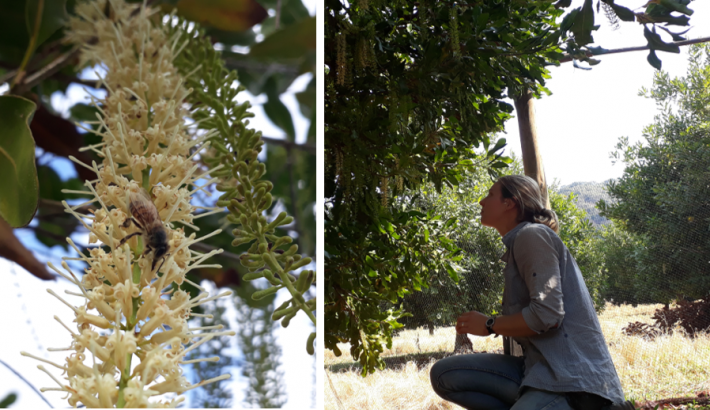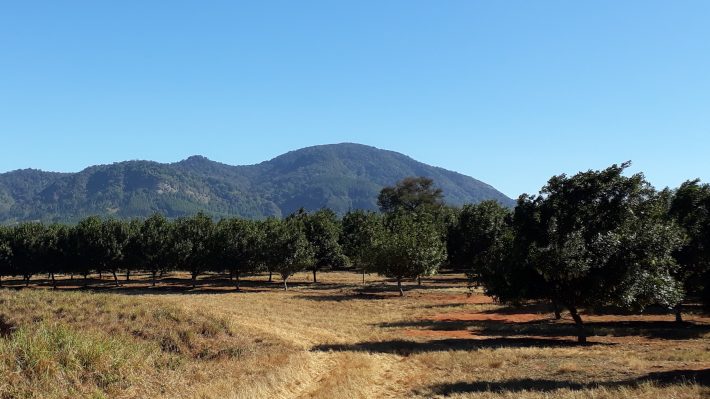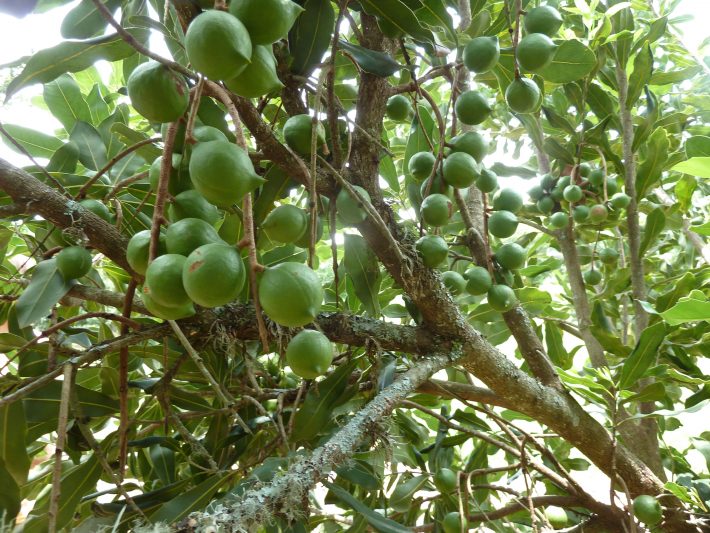University of Gottingen press release
A new collaborative study from the Universities of Gottingen, Hohenheim and Venda in Germany and South Africa, explores how the pollination of macadamia plantations can be enhanced by improving plantation design.

The reduction of biodiversity loss in agricultural landscapes calls for an increase in sustainable and environmentally friendly agricultural practices. A collaborative research team from the universities of Gottingen, Hohenheim (both of which are located in Germany) and Venda (South Africa), investigated how ecosystem services such as pollination could be improved in a macadamia plantation.
The results of the study, published in the Journal of Applied Ecology showed that a certain design of plantation can increase the pollination performance of bees. Some of the design elements studied include, arrangement of trees, varieties of trees and the integration of semi-natural habitats in and around the plantation.

Professor Ingo Grass (University of Hohenheim) stated "Insect pollination of macadamia flowers is essential for production. A complete loss of pollinators would reduce the amount of nuts by 75%." To find out which conditions encourage pollinators, the team observed and counted the bees and other insects present on the macadamia flowers.
Mina Anders (University of Gottingen) explained "The main factor is how large the proportion of semi-natural habitats is in the vicinity of the plantation, since that's where majority of the pollinators fly in from." 80% more nuts grew at the edge of the plantation, land that borders semi-natural habitats more compared to the middle of the plantation.

Directly after flowering, the nut formation increased more than threefold in tree rows planted at right angles to semi-natural habitats, compared to rows planted parallel to them. Pollinators prefer to fly along the tree rows rather than through them, so they are able to move more easily from their habitat to the plantation when rows are placed perpendicular.
Given the urgency to reduce the harmful environmental impacts of agricultural practices, the study emphasises the potential of supporting ecology through intelligent plantation design and the restoration of semi-natural habitats in plantations and the surrounding landscape.
To read the full paper, for free, for a limited time, click here:
Anders, M., Grass, I., Linden, V. M. G., Taylor, P. J., & Westphal, C. (2023). Smart orchard design improves crop pollination. Journal of Applied Ecology, 00, 1- 14. https://doi.org/10.1111/1365-2664.14363






